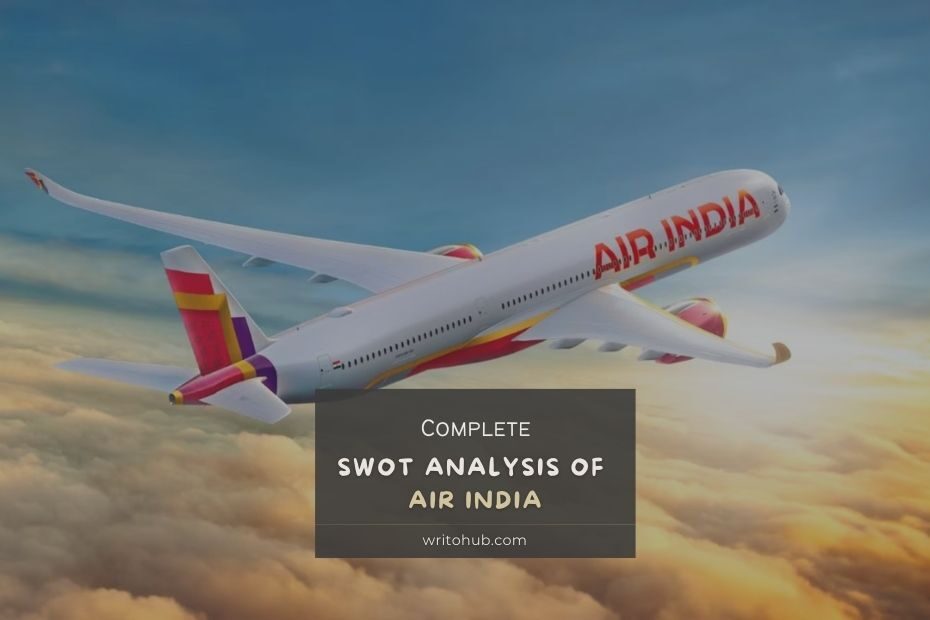The SWOT Analysis of Air India tells the SWOT (Strengths, Weaknesses, Opportunities, and Threats) of the largest international carrier out of India – Air India!
Air India, India’s flagship airline, operates in the highly competitive aviation industry.
A SWOT analysis of Air India reveals its strengths, weaknesses, opportunities, and threats, providing insights into its strategic position in the dynamic market.
Strengths in the SWOT Analysis of Air India
- Established Brand: Air India has a long-standing legacy and brand recognition, especially among the Indian population.
- International Reach: The airline has an extensive international network, connecting India to key global destinations.
- Government Support: As a state-owned enterprise, Air India enjoys government support in terms of infrastructure, regulatory support, and bailout packages.
- Wide Fleet: The airline has a diverse fleet of aircraft, including long-haul and wide-body planes, enabling it to serve various markets.
- Experienced Workforce: Air India has a skilled and experienced workforce, including pilots, engineers, and cabin crew.
Weaknesses in the SWOT Analysis of Air India
- Financial Challenges: Air India has faced persistent financial losses and debt, impacting its ability to invest in modernization and expansion.
- Operational Inefficiencies: The airline has struggled with operational inefficiencies, leading to delays and service disruptions.
- Aging Fleet: A significant portion of Air India’s fleet is aging, resulting in higher maintenance costs and reduced fuel efficiency.
- Intense Competition: The aviation industry in India is highly competitive, with private carriers offering competitive pricing and services.
- Labor Issues: The airline has faced labor disputes and workforce-related issues, leading to disruptions and increased costs.
Opportunities in the SWOT Analysis of Air India
- International Growth: Expanding and optimizing international routes can tap into the growing demand for travel.
- Modernization: Investing in a modern fleet and adopting cost-effective technologies can enhance efficiency and reduce operational costs.
- Alliances and Partnerships: Forming strategic alliances with international airlines can improve connectivity and customer benefits.
- Tourism Promotion: Collaborating with tourism boards and marketing India as a tourist destination can boost passenger numbers.
- Fleet Expansion: Adding fuel-efficient and eco-friendly aircraft can align with sustainability goals and reduce operational expenses.
Threats in the SWOT Analysis of Air India
- Economic Downturns: Economic recessions or downturns can lead to reduced travel demand, impacting revenue.
- Competition: Private airlines in India offer competitive pricing and services, posing a threat to Air India’s market share.
- Fuel Price Volatility: Fluctuations in fuel prices can significantly impact operational costs.
- Safety and Security Concerns: Security incidents or safety issues can harm the airline’s reputation and operations.
- Global Crises: Events like the COVID-19 pandemic can disrupt international travel and airline operations.
Conclusion
Air India’s SWOT analysis highlights its position as a renowned airline with a storied history.
To overcome financial challenges and succeed in the highly competitive aviation industry, Air India must address weaknesses, seize opportunities, and mitigate threats while adapting to changing market dynamics and customer expectations.
